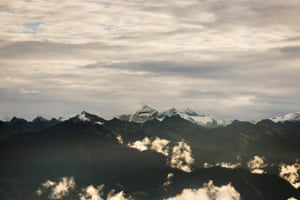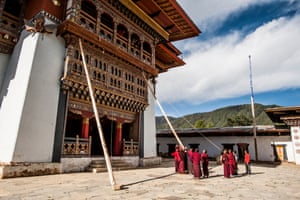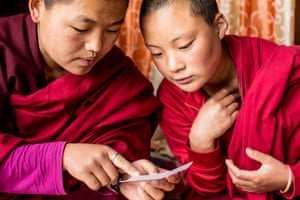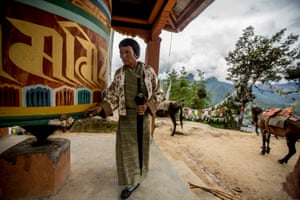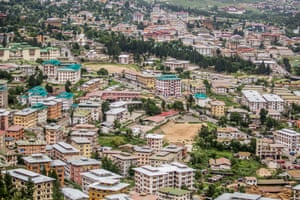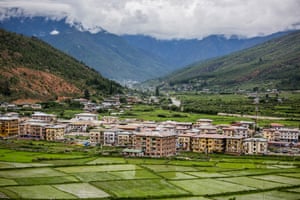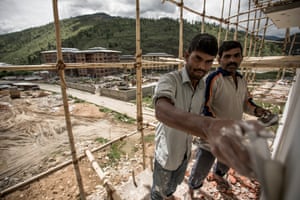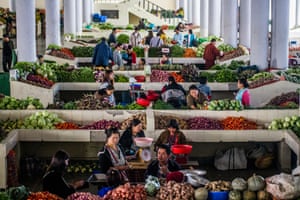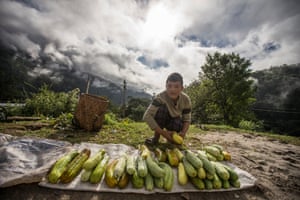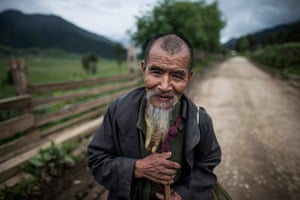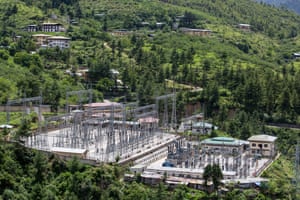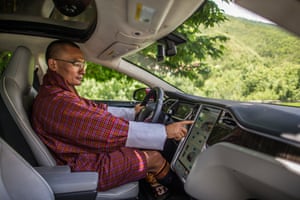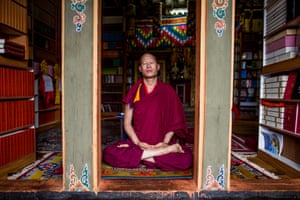Bhutan: where happiness is at the heart of the political agenda – in pictures
The nation best known for valuing gross national happiness above GDP is committed to environmental conservation and sustainability – it absorbs three times more CO2 emissions than its 700,000 population produces. As development accelerates and urban centres expand, the fight is on to safeguard the nation’s holistic approach to prosperity
Photographs by James Morgan
A view of the Himalayas from the Dochula Pass, western Bhutan. The country’s constitution requires at least 60% of its forest cover to be permanently maintained (it is currently at more than 70%). Last summer, Bhutan set a world record for the most trees planted in one hour – nearly 50,000
Bhutan’s culture is rooted in Buddhism. Monks are still revered by large sections of the population and remain an integral part of everyday life for many people, performing birth and death rituals and presiding over prayers on national holidays. Here, monks erect supports to carry out maintenance work at Gangtey Goempa monastery, Phobjikha Valley
Jigme Wangmo and Thujee Zam study together at the Kela Dechen Yangtshi nunnery in Paro, Bhutan.
The nation takes a holistic approach to prosperity that includes social, environmental and political priorities alongside economic ones. As development accelerates, Bhutan’s government and people have engaged in a new fight to preserve its culture and identity.
An elderly woman making the pilgrimage to Taktsang Monastery pauses for a moment of reflection at a prayer wheel.
Bhutan provides universal free healthcare and education, and is on the way to becoming the world’s first 100% organic nation
The capital city, Thimphu, has expanded rapidly since the country opened up to the outside world in the 1970s. An increasingly educated population is leaving rural areas for the city to find better paid jobs, though unemployment figures are high
Traditional farmland is being engulfed as urban centres expand to accommodate the increasing numbers of people moving to seek work in the city. This new development in the Paro Valley is built on paddy field.
Most manual work in Bhutan is carried out by Indian migrant workers. To curb unemployment levels, however, the government is trying to increase the numbers of Bhutanese working in the industry
Thimphu’s only designated landfill site reached capacity in 2002, leading to a great deal of illegal dumping.
Centenary farmers’ market in Thimphu. Lack of work in the cities means that young people are being encouraged to find stable agricultural work in rural areas. About two-thirds of the population still works in agriculture, predominantly in subsistence farming
Some farmers’ markets encourage young people to start up as vegetable growers and then sell their produce in the city
Kahengpa Apa, a farmer in the Phobjikha Valley. The balance of the country’s economy is already shifting away from farming. In 2002 farming accounted for 26% of GDP, but by2014 it was estimated at 16%
Lhakpa and his daughter, Tshering Yangchen, watch TV in their house in the Phobjikha Valley. Internet and TV arrived in Bhutan in 1999 and the state owned Bhutan Broadcast Service remains the only television channel
Thimphu’s electric switching station. All of Bhutan’s power currently comes from hydroelectric dams, exploiting the vast potential of its high peaks and fast-flowing rivers
A tributary of Thimphu river. The long-term plan is to build 74 dams across the country. After domestic needs have been met, the remaining renewable hydropower is sold to India, generating more than 45% of national revenue
Women and children crush cans for recycling. The cans are sold by the kilo to India: there are, as yet, no facilities for recycling them in Bhutan
Environmental conservation and sustainability is at the heart of the country’s political agenda, with the prime minister, Tshering Tobgay – pictured here in his electric car – an outspoken advocate. According to the ‘carbon comparator’ tool developed by the Energy and Climate Intelligence Unit, Bhutan absorbs three times more CO2 emissions than its 700,000 population produce.
Lama Karma in meditation at Tango Monastery, close to Thimphu.
Driven by the need to balance development with conservation, Bhutan led the way at the UN climate change conference in Paris last December, making an ambitious climate promise as the world’s most ‘carbon negative’ country.
Source: the guardian

